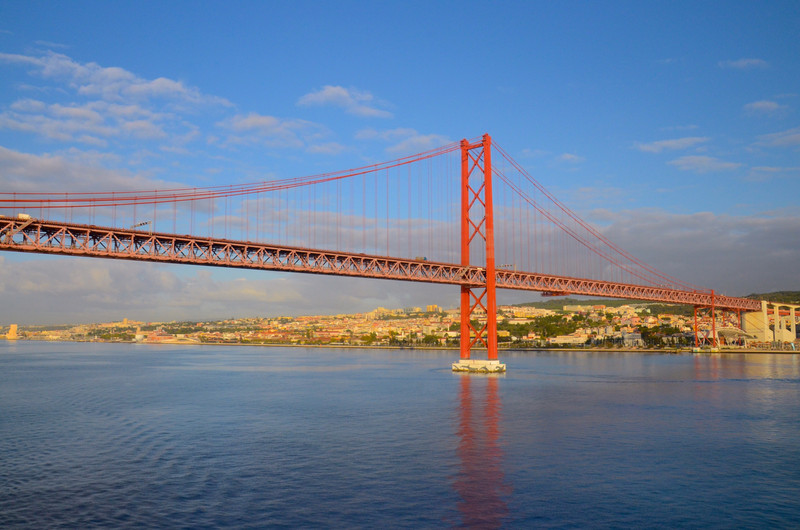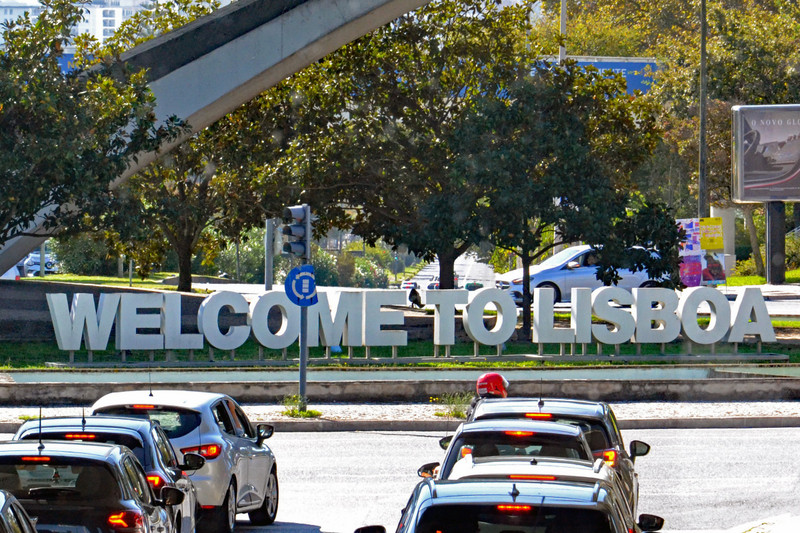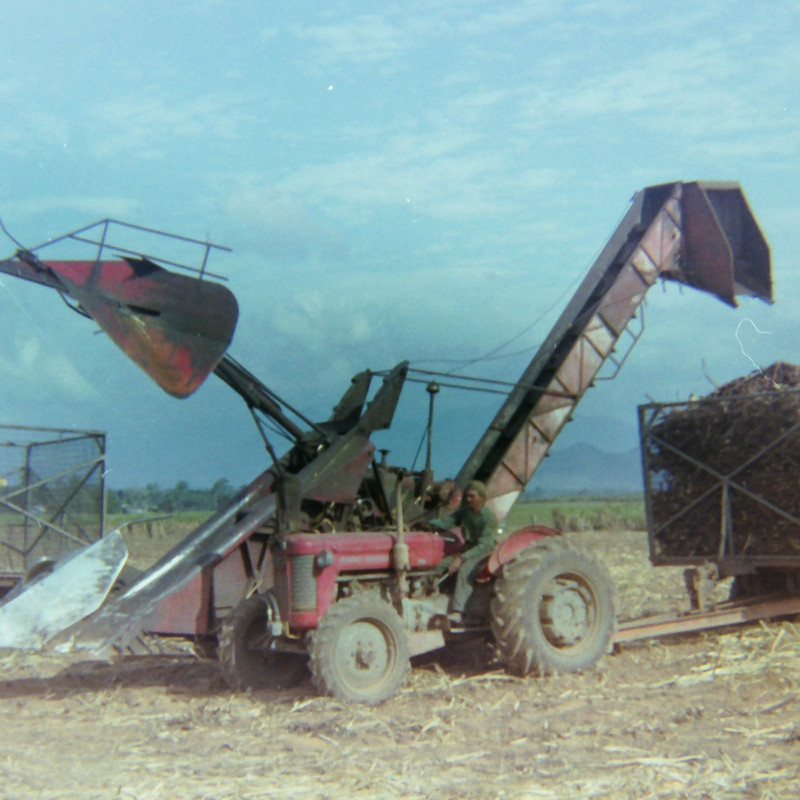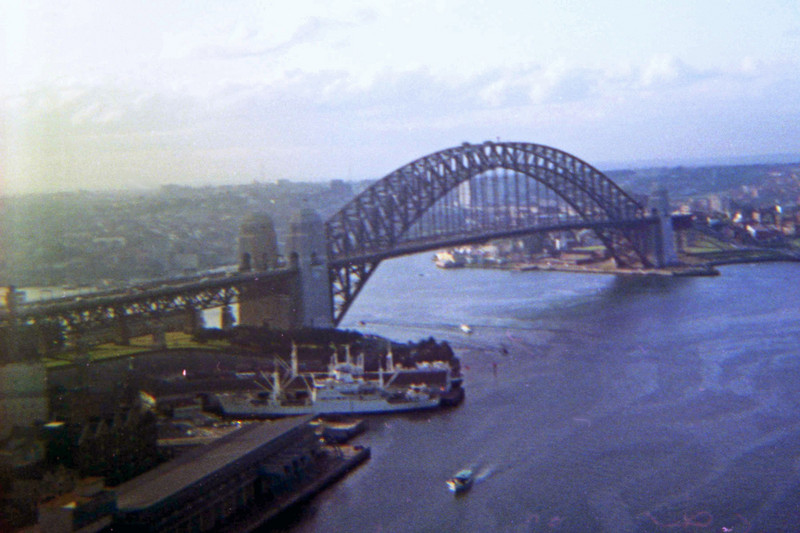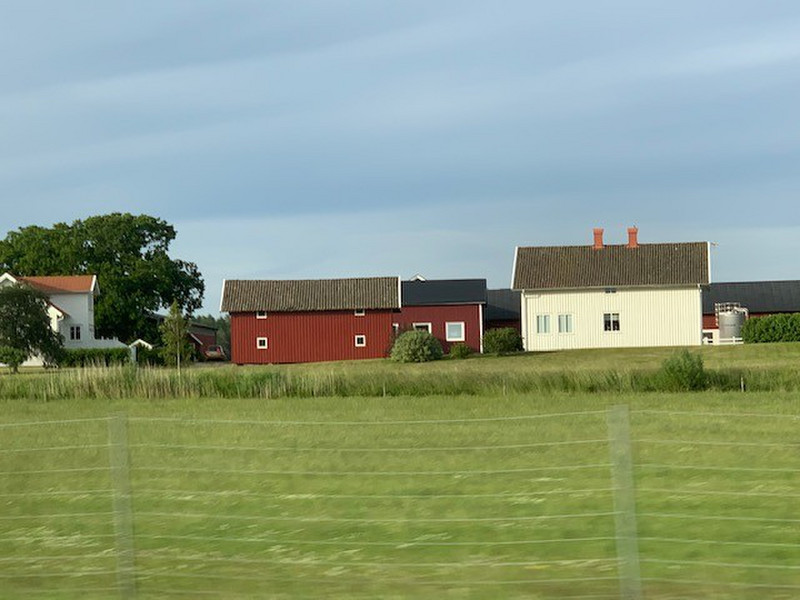Our ship sailed in towards Lisbon around 9am on the brackish River Tagus which meets the ocean at the lighthouse. I was surprised to learn that Lisbon is not on the ocean. Seeing things first hand is a constant history and geography lesson. As we entered the river we passed under their iconic 25th of April Bridge, a replica of our own iconic Golden Gate Bridge in San Francisco. The bright red 25th of April Bridge is named for the celebration of the end of dictatorship and day of liberty (April 25, 1974). It is the longest suspension bridge in Europe. The Bridge has two levels, one for cars and the other for a train on the lower level. We were told there are frequent traffic jams. Unlike the bridge in San Francisco, there is no pedestrian walking or bicycling allowed on this bridge. As we passed under the bridge I saw playful whales painted on the concrete pillars supporting the bridge.
On the hill opposite the city of Lisbon stands the Christ the King Cross, a small copy of the famous Christ the Redeemer statue in Rio. The statue was rented
to honor the Portuguese who were spared during WWI. Now Christ keeps a careful watch over the city of Lisbon but apparently does nothing to lesson traffic jams.
Built on seven hills, Lisbon has been Portugals capital since the 13th century. The area around the steepest hill, Sao Jorge, (Saint George), was first settled by Phoenicians in the twelfth century BC. They were followed by Carthaginians, Romans, several Germanic tribes, and Visigoths. In AD 714, the Moors captured Lisbon, and held it for the next 400 years. The Christians retook the city in 1147, led by Afonso I, supported by a fleet of the second crusade.
Portuguese explorers began colonizing parts of Africa and Asia at the beginning of the 15th century. Vasco da Gama set sail for India from Lisbon in 1497, and the city became a center for successful voyages of discovery throughout the East and the New World for the next 300 years. The immense riches brought back by these explorers and navigators ushered in a period of building and expansion that gave birth to the new Manueline architectural style, with its ornately carved decorative motifs. As we sailed into port
By 9:30am the ship had docked and we off to begin our 8 hour bus and walking tour of Sintra and Lisbon with Bernardo from Top Day Tours as our tour guide. We boarded the bus and during the half hour ride Bernardo gave us some background of the city.
During the 16th and 17th centuries, Lisbon, as well as the rest of Portugal, had been the greatest sea power in all of Europe, eclipsing even Genoa and Venice. At the peak of Portugals power, on November 1, 1755, during the Feast of All Saints, Portugal was struck by a series of earthquakes. The subsequent fires and tsunami, killed 60,000 people, and demolished 12,000 buildings destroying Lisbon and the surrounding areas. The tsunami also destroyed coastal fortresses in the Algarve and razed several houses but changed the course of history by destroying the wealth that had been Lisbons glory for two centuries. The future Marquis of Pombal was credited with his plans to rebuild the city but the ruins of the Carmo Convent in Lisbon were saved as a
As the bus continued out of Lisbon, Bernardo proudly pointed to the Aqueduto das Agues Livres (Free Waters Aqueduct) now a national monument. The impressive aqueduct that had been supplying drinking water to Lisbon since 1748 was considered one of the most remarkable hydraulic engineering works built at the time. It amazingly had survived the earthquake. I managed to grab a photo out of the bus window as we sped by.
Our bus climbed for ten minutes up steep and narrow switchbacks in a densely treed area in Pena Park where we were dropped off to pick up a small van that carried us through a long and winding forested road to the top where we got off and walked up the steep hill entering through the Morrish gate that lead up to the palace.
